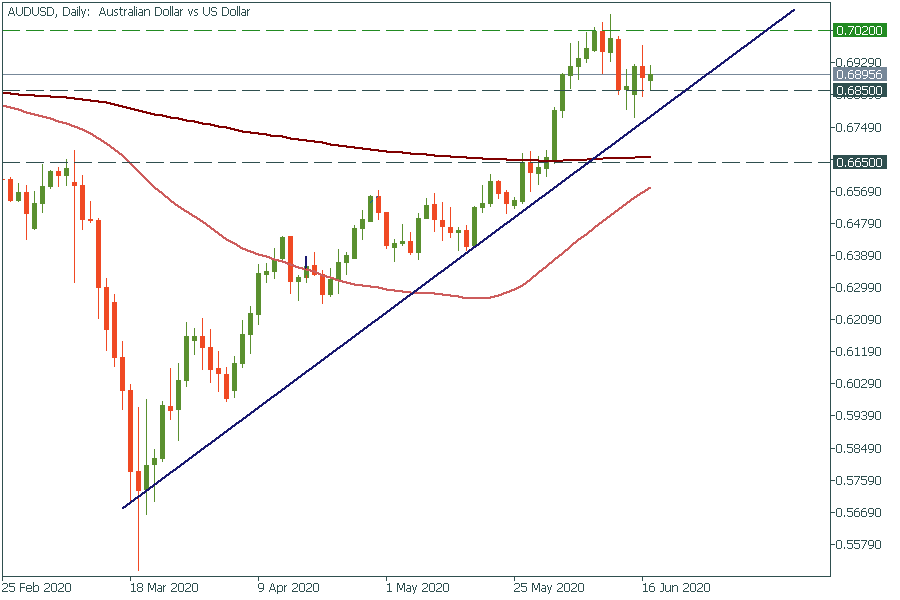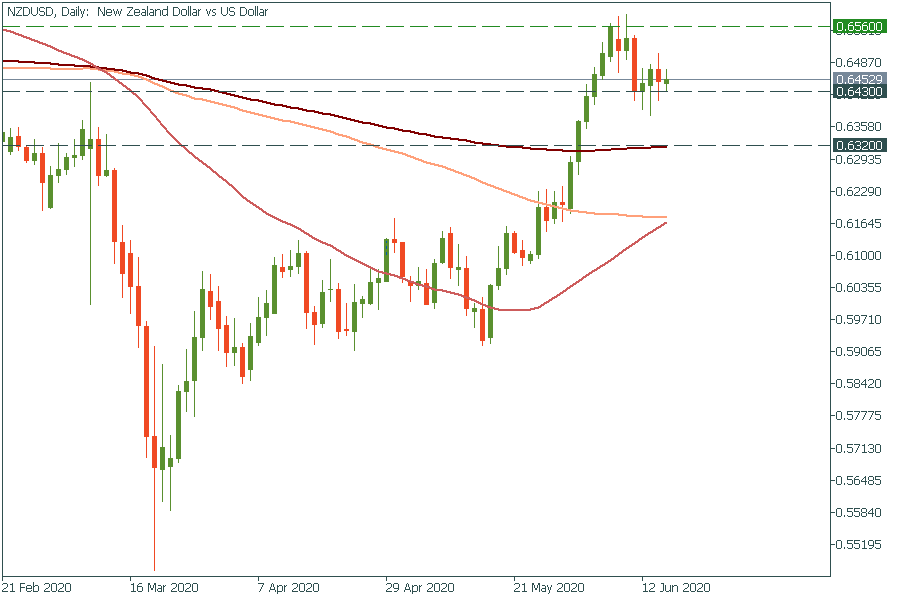All eyes on AUD and NZD
The fresh data from New Zealand and Australia will be released tomorrow morning! Follow up!
What will happen?
On June 18 New Zealand will report its quarter-to-quarter GDP at 1:45 MT time. Later at 4:30 MT time Australia will reveal the employment change.
Why is it important for a trader?
GDP is the broadest measure of economic activity and the primary gauge of the economy's health. Also, the unemployment rate is not less important as it shows how fast the economy is recovering from the coronavirus damage. These days the market is really volatile and hugely depends on the overall sentiment, which changes almost every day. It’s significant to watch these events closely to catch the right impulse in time.
How to trade after the release?
If the data is better than expected and it overweighs risk-off factors, AUD and NZD will gain.
There are several risk-off factors that can prevent AUD and NZD from rising, even if their reports are positive. The first one is the pessimistic outlook of the Fed’s Chairman Jerome Powell for the global economic recovery. He emphasized during his speech that the economy is still well below pre-crisis levels, even if there are some improvements. The US May jobs report and retail sales were better than expected. However the Fed’s chairman stays cautious. That’s why investors are concerned too. Moreover, the new coronavirus outbreak in China and resurgence of infections in Florida add more worries. Now it’s a good idea to check global coronavirus numbers. If demand for risk resumes, USD will fall and it will be enough to push AUD and NZD upward.
Technical outlook
AUD/USD has set a strong bullish trend and has never crossed the support line. It’s headed towards the resistance at 0.7020 – the high of June 8. The move below 0.6850 may push the price lower to the next support at 200-day moving average at 0.6650.

NZD/USD is moving up to the resistance level at 0.6560. If the price falls below 0.6430, it may drop even deeper to the next support at 0.632 where is the 200-day moving average. Check out tomorrow the data from New Zealand and Australia!

